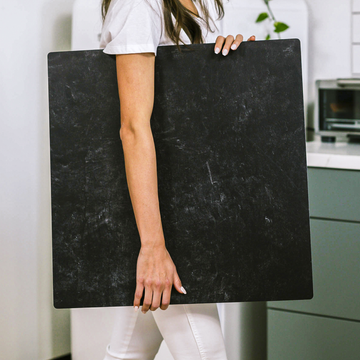Flatlay photography has become the language of makers and small business owners everywhere. A beautifully composed overhead shot can capture the feel of your products and the essence of your brand in a single frame. But have you ever stopped to wonder why some flatlays practically leap off the screen, while others fall flat-no pun intended?
There’s a fascinating world beneath your props and products that goes far beyond pretty patterns. If you want images that look professional and truly draw your viewers in, it’s time to dig into the *secrets* of micro-texture and macroplane curvature. Trust me, these aren’t just photography buzzwords-they’re your new creative allies.
The Magic of Micro-Texture: Touch Your Backgrounds, Not Just Look at Them
Imagine running your finger over real marble or hand-woven fabric. That sensation you feel-that’s micro-texture. In photography backgrounds, it refers to the tiniest raised grain, pores, or threads, built right into the surface.
Here’s why micro-texture matters for your flatlays:
- Light Diffusion: Texture scatters light naturally, getting rid of harsh glare and ugly hotspots. Your photos end up with soft, professional-looking highlights and depth, even when you use simple lighting.
- Believability: Your camera lens picks up tiny shadows and variations, making products look authentically grounded-not like they’re floating on a fake background.
- Color Pop: Micro-texture helps backgrounds reflect color more subtly and accurately, making everything from skin tones to sprinkles look their best.
If you can feel subtle bumps and ridges with your fingertip, that’s a sign your backdrop will work wonders in your next shoot.
Meet Macroplane Curvature: When “Flat” Isn’t Really Flat
It sounds counterintuitive, but the best flatlays often start with a backdrop that’s not perfectly, laser-straight flat. Macroplane curvature describes the slight, sometimes invisible-to-the-eye bending or warping that happens naturally-or by design-across the full surface.
Why does it matter? Let’s break it down:
- Seamless Visual Transitions: A tiny curve between your “table” and “wall” background smooths out the transition, creating that dreamy, infinity look you see in high-end product shots.
- Softer Shadows: A gentle curve stops those distracting, hard-edged shadows from showing up where you don’t want them. Shadows end up soft and natural, giving your products dimension.
- Lighting Control: You can actually sculpt light and shadow as you shoot-just by propping one side of your background higher or lower. It’s like an invisible dial for mood and focus.
Want to try it? Place a thin book under one end of your board, shoot the same setup, and see how the light and shadow transform. Sometimes the tiniest tilt makes all the difference.
Why Premium Surfaces Outperform Prints Every Time
There’s a reason photographers and brand-builders turn to backgrounds like Replica Surfaces: they deliver the qualities that make product images unforgettable. These portable panels offer real texture and sturdy construction, so you can stand them, tilt them, and get pro results in a small space.
Here’s how they give your flatlay photos a competitive edge:
- Consistent Quality: Unlike paper prints, a dedicated surface won’t crease, ripple, or shine weirdly under light.
- Believable Depth: Realistic texture combined with just-right rigidity means your images look more like a magazine ad than a quick DIY snap.
- Versatile Styling: Whether you’re shooting food, jewelry, skincare, or crafts, you can create the look and feel you want-with much less retouching later.
Try It Yourself: Small Tweaks, Big Impact
- Texture Test: Place the same item on a smooth printed backdrop and then on a textured panel. Compare the highlights, shadows, and how “real” the setup feels at 100% zoom.
- Curvature Control: Use a prop to lift one side of your board just a bit. Watch how the mood of your shot changes, especially as you play with light from different directions.
You’ll be amazed at how much dimension and professionalism you can add-often with items you already have at home.
The Takeaway: Let Your Backgrounds Do the Heavy Lifting
The little details you can’t always see-the ones you *can* feel-are the key to flatlay images that connect and convert. With the help of micro-texture and a touch of curvature, your photos stop being mere snapshots and start telling a story your followers want to be part of.
Next time you plan a flatlay session, ask yourself: how does my background feel to the light, not just to my eye? That’s the subtle shift that transforms everyday photography into something that makes your brand stand out.
Have your own tips on shooting flatlays or want to share your results? Drop a comment! Let’s keep raising the bar, one thoughtful photo at a time.



